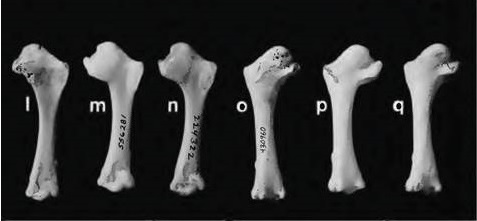
Ceramics were invented independently at least twice in North America – in the Southeast about 4,500 years ago, and in the Northeast around 3000 years ago. The earliest pottery in the northeastern United States and southern Canada is called Vinette, named after an archaeological site in New York state, and dates to the Early Woodland, about 3,100-2,300 cal years BP.
Since we now know pottery vessels predate the introduction of maize, it has been posited that ceramic vessels were used in preparing wild seeds and nuts or animal fats and oils, although these food sources were used by people long before pottery was invented. Perhaps there were other reasons that explain why ceramics were invented.
Karine Taché has been researching Vinette pottery for a while now, and in a new paper in Antiquity with Oliver E. Craig, they conduct carbon and nitrogen isotope analysis and lipid analysis of Vinette I sherds and carbonized deposits (i.e., burned food remains) from 33 sites in the U.S. and Canada.
Overall, they argue that Vinette I pottery is associated with processing of marine or freshwater resources; few sherds show evidence of being used to process terrestrial animals like deer or elk, and little to no evidence for processing plant foods. There is also no identifiable patterning through time or space.
While they recognize that contemporary and earlier hunter-gatherers would have eaten both terrestrial and aquatic animals and that subsistence varied, the authors are arguing that Vinette I represents a change in the use of fish. It is important to keep in mind, however, that there is good evidence for use of fish prior to the Early Woodland, including during the Late Archaic at the Lamoka Lake site.
How to explain these results?
In north-eastern North America the innovation of pottery co-occurred with key social developments such as the increased regionalisation and complexity of hunter-gatherer groups (Versaggi 1999), the emergence of new elaborate mortuary practices (Farnsworth&Emerson 1986;Heckenberger et al. 1990), and the creation of long-distance interaction networks that ensured the circulation of prestige items (Taché 2011). (p. 185)
The archaeological evidence for this include:
increased evidence for surplus accumulation (e.g. storage features) and social inequalities (e.g. differential distribution of grave goods), the advent of burial precincts distinct from habitation sites, complex burial practices shared between distinct groups (e.g. cremations, intentional destruction and burning of grave goods, abundance of red ochre in burials), and by the widespread distribution of stylistically and technologically homogeneous artefacts (e.g. Onondaga chert bifaces, ground slate objects) and exotic raw materials (e.g. native copper, marine shells). The social context for such long-distance interaction typically takes place at large, episodic and multi-ethnic gathering sites. (p. 186)
If correct, these gatherings would have taken place the same time that fish were spawning and could be taken in large numbers.
Intriguingly however, the relatively small size and low abundance of vessels at these sites precludes a major economic role for pottery. Instead, pottery may have been used to prepare fish as part of small-scale celebratory feasts. The act of cooking and consuming fish with novel ceramic containers would have been largely symbolic, serving to cement social relations during these important periods of aggregation. Therefore, we would expect the bulk of aquatic resources harvested during these gatherings to be processed and consumed using other means. (p. 186)
Based on ethnographic data, pottery could also have been used in preparing fish oil in bulk for storage. In this case,
as large quantities of fish yield limited amounts of oil, only a few ceramic containers would have been required. The production of fish oil either for exchange with more distant communities, or as a highly valued prestige food for conspicuous consumption, would also reinforce social relations during periodic aggregation of scattered hunter-gatherer groups, in keeping with the ‘cooperative harvesting’ hypothesis. (p. 186)
Reference:
Karine Taché & Oliver E. Craig
2015 Cooperative harvesting of aquatic resources and the beginning of pottery production in north-eastern North America. Antiquity 89:177-190.



![By Charles R. Knight [Public domain], via Wikimedia Commons](https://lamokaledger.com/wp-content/uploads/2015/02/Castoroides_Knight.jpg)

